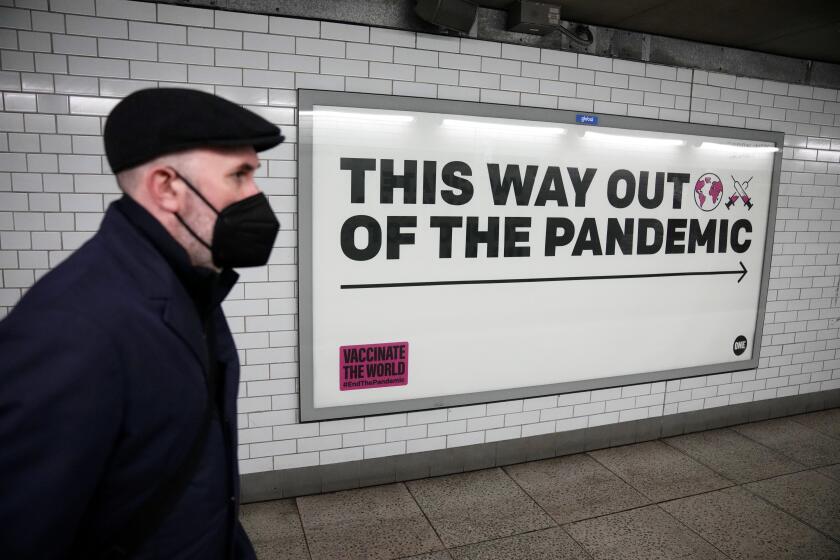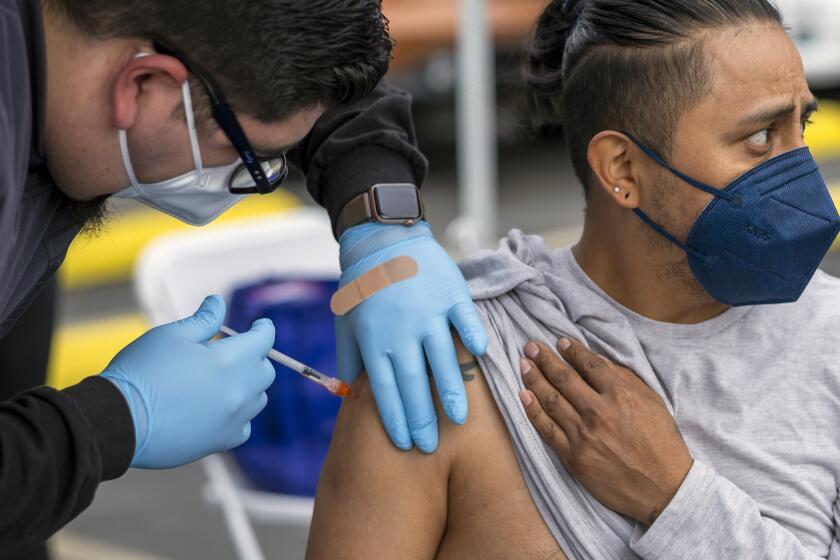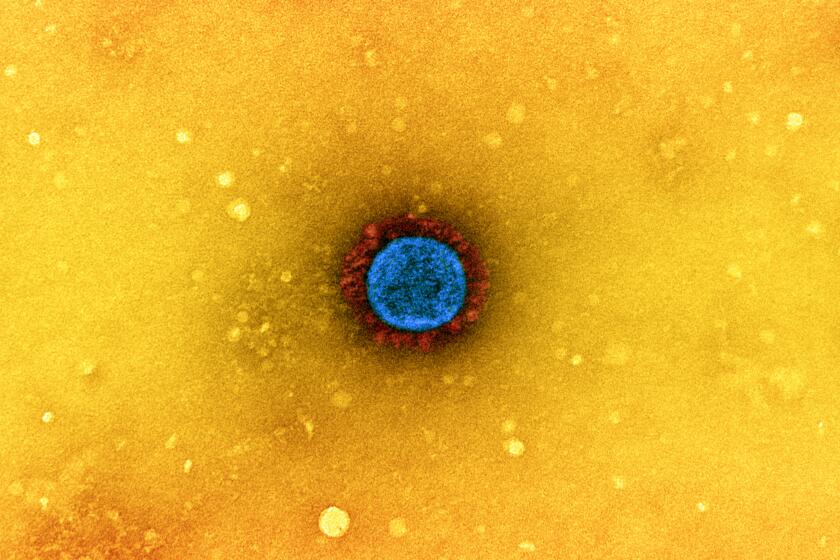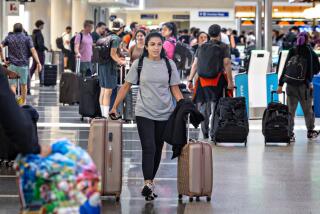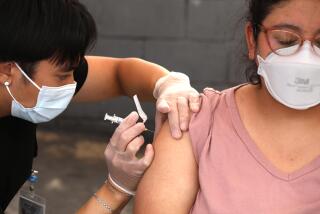Which COVID rules have changed? What to know about masks, work and boosters
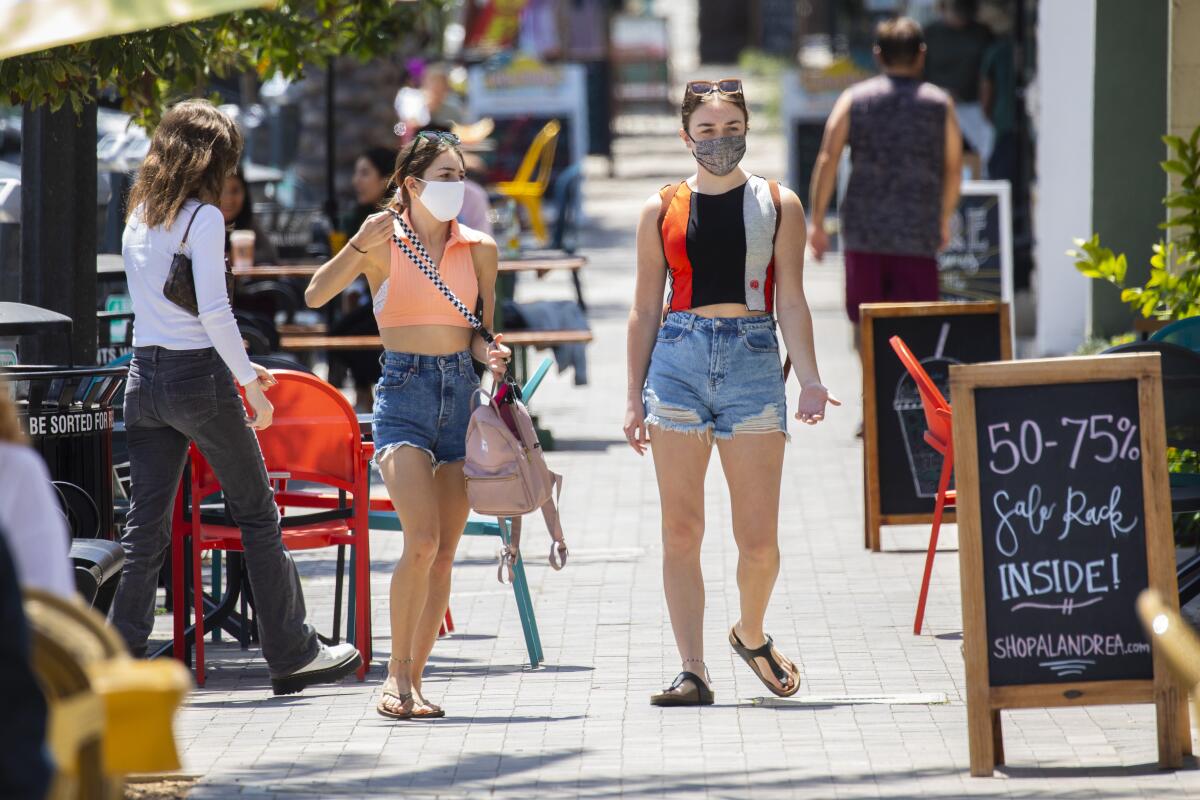
In recent days you might have noticed many unmasked people inside grocery stores or your favorite retailer.
The lack of face coverings comes just days after Los Angeles County lifted its indoor mask mandate March 4. The county made the move with a stamp of approval from the Centers for Disease Control and Prevention, which declared that the county’s level of community transmission had officially dropped into the “low” category.
It’s the most visible sign that COVID-19 is on the wane again, two years after the start of the pandemic. Under this new guidance, though, businesses can still choose to keep their mask requirement for both customers and employees. L.A. County residents can also decide whether or not to wear a mask in any public space.
So what should you do about masks, social distancing and other routine pandemic-related precautions?
To help answer that question, here are some facts about the updated guidance from federal, state and county health experts on masks and other COVID-19 precautions.
When should I wear a mask?
Now that L.A. County has lifted its indoor mask requirement, deciding where and when to wear a mask is up to you.
Nevertheless, county health officials, the CDC and state health officials “strongly recommend” wearing a mask in indoor public settings and businesses as well as crowded outdoor settings.
If you’re not sure what to do, you might consider how prevalent COVID-19 cases are in your area. You can find the latest data on The Times’ coronavirus tracker or, for Los Angeles County, the county’s daily data page.
What about social distancing and gatherings?
These days, the county’s core prevention strategies for businesses and organizations revolve around masking, testing, vaccine verification, and ventilation, not mandating social distancing. When it comes to gatherings, the main focus for businesses is to reduce crowding indoors and ventilate.
Most stores have done away with those large stickers on the floor that spaced customers six feet apart in checkout lines. In fact, L.A. County’s protocol for social distancing has not been in effect since April 30, 2021.
If you’re attending a large gathering or event, it will still increase your chance of being exposed to COVID-19, the CDC warns.
When planning a gathering with friends and family, the CDC recommends that you consider the level of COVID-19 risk in your community by using its COVID-19 county check tool. With that information you can decide whether it would be wise to move the gathering outdoors or take other steps to guard against an infection spreading.
Throughout the pandemic, the U.S. has followed Europe by several weeks in waves of cases, and that may happen again, health experts warn.
How do I tell if I caught COVID-19?
More than 1,400 people in L.A. County are still testing positive for the coronavirus every day, so make no mistake — the virus is still out there, and you can still become infected. Health officials in California warn that we shouldn’t be surprised by potential new surges or the emergence of a new coronavirus variant. In fact, cases are jumping in Europe, powered in part by a more infectious version of the Omicron variant.
The CDC has a ‘self-checker’ questionnaire on its website to help you decide whether to seek appropriate medical care. It’s not meant to help you diagnose yourself or pick a treatment, however.
The first symptoms of COVID-19 can vary from person to person, and the list of possible symptoms hasn’t changed much since the early days of the pandemic.
You may have COVID if you have: fever or chills, cough, shortness of breath or difficulty breathing, fatigue, muscle or body aches, headache, new loss of taste or smell, sore throat, congestion or runny nose, nausea or vomiting, or diarrhea.
The CDC says this list doesn’t include all possible symptoms, and it promises to continue updating the list as it learns more about the virus.
What do I do if I test positive for COVID-19?
In Los Angeles County, if you test positive for the coronavirus, you are required to isolate yourself, wear a mask indoors and outdoors, and tell your close contacts that they have been exposed to the virus.
Anyone with COVID-19 must isolate for at least five days. You could require more time apart if you still have symptoms and test positive on the fifth day of isolation.
If you have any questions, you can call the county’s COVID info line at (833) 540-0473. Help is available from 8 a.m. to 8:30 p.m.
When can I return to work after COVID?
According to L.A. County’s Department of Public Health, employees who become infected must stay out at least five full days after symptoms appear or after the worker tests positive. Employers may then allow them to return if they test negative, show improving symptoms and go fever-free for at least 24 hours sans medication. The guideline is the same regardless of whether the employee is fully vaccinated against COVID.
If they aren’t tested, employees can return to work after 10 days of isolation if they’ve been fever-free for at least 24 hours without the help of medication and show no symptoms or improving symptoms.
The CDC says people who are mildly ill with COVID-19 must continue to wear a properly fitted mask around others for five additional days after the five-day isolation period.
If you tested positive but do not have symptoms, you can return to work if you never develop symptoms, you get a negative COVID-19 test result on the fifth day of isolation and you wear a well-fitted mask for 10 days.
If you’re an employee and you know you’ve been in contact with someone who has COVID-19, you must isolate yourself for at least five days and get a test on the fifth day.
How do I get more COVID-19 tests?
There are several ways to get tested or order at-home testing kits.
If you have to be tested for work, your employer is required to make testing available. Similarly, if you have to be tested to attend school, your educational facility should provide you with a test.
You can acquire a testing kit at no cost and without an appointment through L.A. County’s Pick-Up Testing Kit program. The county has 13 testing sites where you can pick up a sample collection kit; you can collect a sample there in your car or at home, then return the kit to the same site. The test must be activated using a link provided on the outside of the testing packet, and the county urges you to return the sample within three to five days. Fulgent Genetics, which analyzes the samples, will send you an email to notify you when the results are ready.
You can also order a set of four free at-home COVID-19 tests from the federal government online, even if you’d already received a first set (you are entitled to two sets). These kits are delivered directly to your home address through the U.S. Postal Service.
Finally, if you have health insurance, you can obtain over-the-counter home test kits and be reimbursed — or possibly even get them with no out-of-pocket costs from your insurer’s preferred pharmacies. Contact your insurer for details on how to obtain free tests.
Do I need a COVID-19 test to fly?
A COVID-19 test is required for all international travelers entering the United States, even if fully vaccinated. A sample must be collected no more than one day before the flight’s departure. Children under two years old and people who can prove that they recovered from COVID-19 in the past 90 days are exempt from the testing requirement.
To document that you’ve recovered from COVID, you’ll need to show a positive COVID-19 test result from up to 90 days before the flight’s departure and a letter from a licensed healthcare provider or public health official stating you are cleared to travel.
Before traveling, check your destination’s COVID-19 safety guidance on testing. If you’re traveling within the U.S. and you’re not fully vaccinated, the CDC’s guidance is to get tested at least three days before you travel and three to five days after you return home.
If you are fully vaccinated, consider getting tested before and after travel anyway.
Health officials battle myths and disinformation in convincing people to get their COVID-19 booster shots.
Should we be getting additional booster shots?
Otto Yang, UCLA professor of medicine and microbiology, immunology and molecular genetics, said the situation is still in flux as we wait for data from the first booster shot.
“We’re following the data in real time to make decisions, but based on the monitoring in other countries that started boosting earlier, and based on the data that’s developing now, it is looking like the immunity does wane,” Yang said.
There are two sources of immunity that are promoted by the vaccine: antibodies and T cells. Antibodies work to prevent the initial symptomatic infection, Yang said, and T cells work to prevent severe illness or death once someone has been infected.
What we know now, he said, is that antibody counts drop very quickly and are affected very much by the unique features of the variants, especially Delta and Omicron. T cells stick around longer than antibodies, but they also wane in their efficacy as time passes after vaccination.
In February, the CDC released a report that found the protection a booster shot provides against severe illness and death starts to wane noticeably after about four months.
“That’s, of course, pretty concerning in terms of personal protection because, ultimately, what really matters is the vaccine protects you from getting hospitalized or dying,” Yang said.
When the coronavirus attacks the body, the immune system steps up, trying to respond quickly and powerfully enough to stop the virus from running wild.
More to Read
Sign up for Essential California
The most important California stories and recommendations in your inbox every morning.
You may occasionally receive promotional content from the Los Angeles Times.
